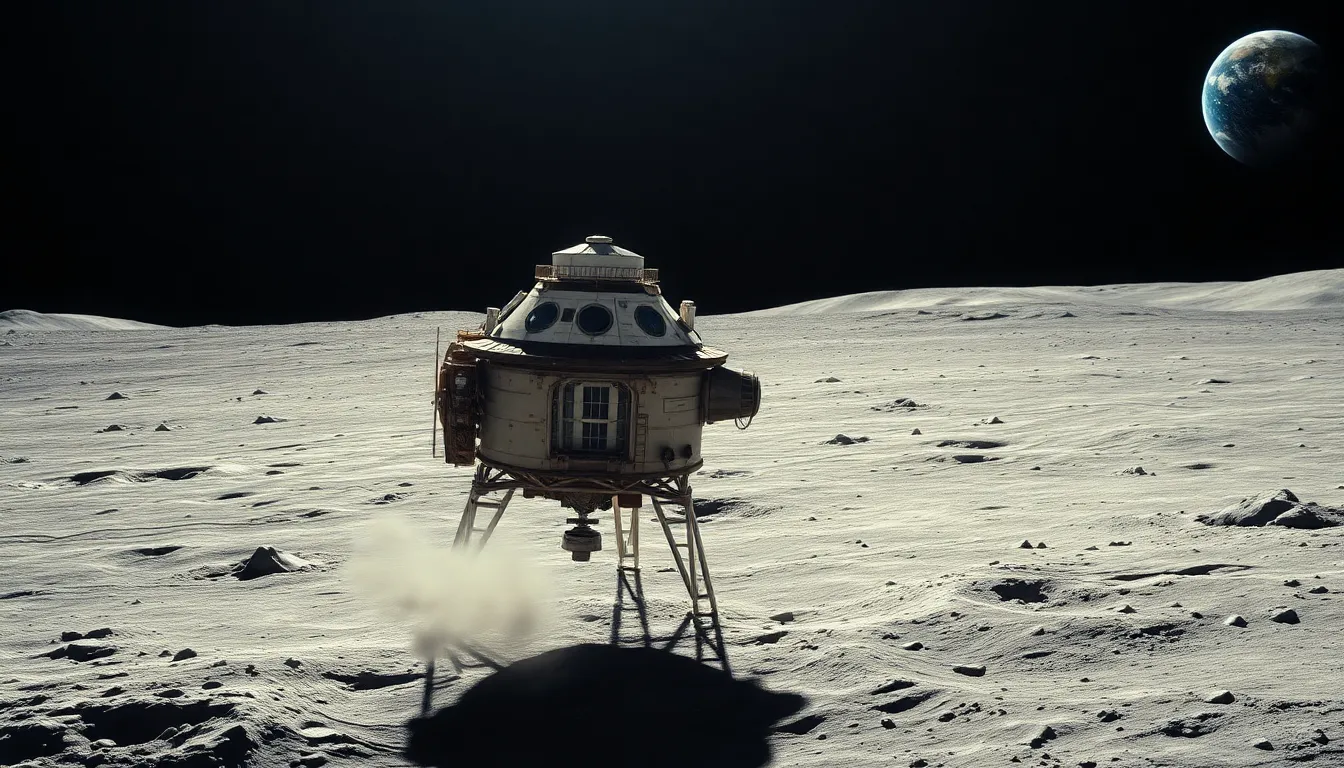In a universe where technology evolves faster than a rocket ship on a caffeine rush, the intersection of space and technology is nothing short of mind-blowing. From smartphones that can navigate the cosmos to satellites that keep us connected while we binge-watch our favorite shows, the advancements are out of this world—literally!
Table of Contents
ToggleOverview of Space and Technology
Space and technology demonstrate a symbiotic relationship, enhancing capabilities in exploration and communication. Advancements in satellite technology enable global connectivity, making it feasible for users to stream content seamlessly from any location. Satellites orbit Earth, gathering vital data that informs weather predictions and natural disaster responses.
Tools like smartphones leverage GPS technology, allowing precise navigation across vast distances. The integration of augmented reality in mobile devices enhances the user experience, creating immersive environments for learning about celestial bodies. Numerous applications utilize satellite imagery to track climate change and monitor environmental shifts.
Innovations in propulsion systems drive the next generation of space travel, with reusable rockets significantly reducing launch costs. Companies like SpaceX and Blue Origin lead the way, pushing boundaries and increasing access to space for research and tourism. Robotic missions explore distant planets and moons, gathering data that expands scientific understanding.
Collaboration between private entities and government agencies fosters rapid advancements. NASA’s partnerships with commercial companies accelerate technology development for Artemis missions, aiming to return humans to the Moon by 2024. Research telescopes increasingly rely on high-tech imaging systems, uncovering galaxies and phenomena previously unseen.
Overall, the convergence of space and technology creates opportunities for exploration, communication, and innovation. The continual evolution in this field promises significant developments that will redefine humanity’s presence in the universe.
Historical Developments in Space Exploration

Historical developments in space exploration reveal significant milestones and technological advancements. Space race dynamics during the mid-20th century ignited early missions and fostered innovation.
Early Space Missions
The Soviet Union launched Sputnik 1 in 1957, marking humanity’s first artificial satellite. Following this, Vostok 1 transported Yuri Gagarin into orbit in 1961, making him the first human in space. The United States responded with Mercury and Gemini programs, leading to crucial lessons in human spaceflight. Apollo 11 achieved a historic lunar landing in 1969, with astronauts Neil Armstrong and Buzz Aldrin stepping onto the moon’s surface. Each mission established foundational knowledge for future deep-space exploration.
Technological Advances
Significant technological advances evolved during and after early missions. Development of robust launch vehicles, including Saturn V, showcased capabilities for transporting payloads beyond Earth’s atmosphere. Satellites advanced communication, enabling real-time data transmission and navigation globally. Innovations in materials science contributed to lightweight, durable spacecraft. Robotics and automation propelled missions like Voyager, allowing autonomous exploration of distant celestial bodies. These advancements set a precedent for future exploration and increased collaboration among various space agencies.
Current Technologies in Space
Innovative technologies continue to shape the space sector. The advancements made enhance exploration, communication, and understanding of the universe.
Satellites and Their Functions
Satellites play essential roles in modern technology. They facilitate global communication, allowing people to connect regardless of location. Weather satellites gather critical data, aiding in forecasts that inform public safety. Earth observation satellites monitor environmental changes, contributing to climate research and disaster management. Navigation satellites underpin GPS technology, enabling precise positioning for millions of users. Numerous satellites help enhance television and internet services, ensuring seamless streaming and connectivity worldwide.
Robotics in Space Exploration
Robotics revolutionizes space exploration. Rovers like Perseverance and Curiosity operate autonomously on Mars, collecting samples and conducting experiments. These robotic systems analyze surface conditions and search for signs of past life. Drones are increasingly utilized for aerial surveys on other celestial bodies, providing valuable data without human intervention. Spacecraft equipped with robotic arms, such as the Canadarm on the International Space Station, assist with satellite repairs and cargo handling. Robotic technologies continue to evolve, paving the way for future explorations of deeper space.
The Future of Space and Technology
The next phase of space exploration promises thrilling developments. New missions aim to deepen humanity’s understanding of celestial bodies and expand our reach into the cosmos.
Upcoming Missions
Various upcoming missions target different objectives, enhancing global collaboration. NASA’s Artemis program seeks to return humans to the Moon, with a goal of establishing a sustainable presence by 2024. Additionally, the European Space Agency plans the Jupiter Icy Moons Explorer (JUICE) mission to investigate three of Jupiter’s moons, crucial for understanding potential habitability. SpaceX’s Crew Dragon missions continue transporting astronauts to the International Space Station, ensuring ongoing research and experimentation in microgravity. Organizations worldwide, including India’s Indian Space Research Organisation, are pushing boundaries as they advance their own ambitious missions.
Innovations on the Horizon
Innovations on the horizon promise to transform our relationship with space. Advanced propulsion technologies, such as ion thrusters, enable spacecraft to travel faster and farther. Enhanced satellite technology includes small satellites or CubeSats, which offer affordable options for scientific missions. Artificial intelligence integration into robotic systems can optimize data collection and analysis on extraterrestrial bodies. Furthermore, 3D printing in space could revolutionize manufacturing, creating necessary components during missions. The combination of these innovations facilitates more efficient exploration and scientific advancement, shaping the future of humanity in space.
Challenges in Space and Technology
Space exploration faces significant challenges that impact environmental sustainability and financial viability. Addressing these concerns is crucial for the future of the industry.
Environmental Concerns
Launching rockets produces greenhouse gases and contributes to atmospheric pollution. Increased traffic in low Earth orbit leads to space debris, posing risks to satellites and the International Space Station. Pollution from rocket propellant affects both air quality and climate change. Therefore, developing environmentally friendly technologies, such as greener fuels and recyclable launch systems, is essential. Collaborative efforts among space agencies can enhance awareness of sustainable practices, leveraging innovation to mitigate adverse impacts on Earth’s environment.
Budget and Funding Issues
Securing adequate funding remains a top priority for space missions. Governments often face budget constraints that limit the scope of exploration initiatives. Public-private partnerships offer alternative funding avenues, fostering innovation while spreading financial risk. Additionally, increased competition among private companies drives down costs, allowing for more ambitious projects. Sustainable investment strategies focus on long-term benefits, emphasizing the importance of technological advancements in meeting scientific goals. Ultimately, efficient allocation of resources is critical for sustaining progress in the field of space exploration.
The interplay between space and technology is reshaping humanity’s journey into the cosmos. As innovations continue to emerge the possibilities for exploration and communication expand exponentially. The advancements in satellite technology and robotics are not only enhancing our understanding of the universe but also improving everyday life on Earth.
Looking forward the future holds exciting prospects with upcoming missions and technological breakthroughs. Sustainable practices and collaborative efforts will be essential in overcoming challenges and ensuring a viable path for exploration. The fusion of creativity and technology promises to redefine the boundaries of what’s possible in space, paving the way for future generations to explore and understand the universe like never before.





